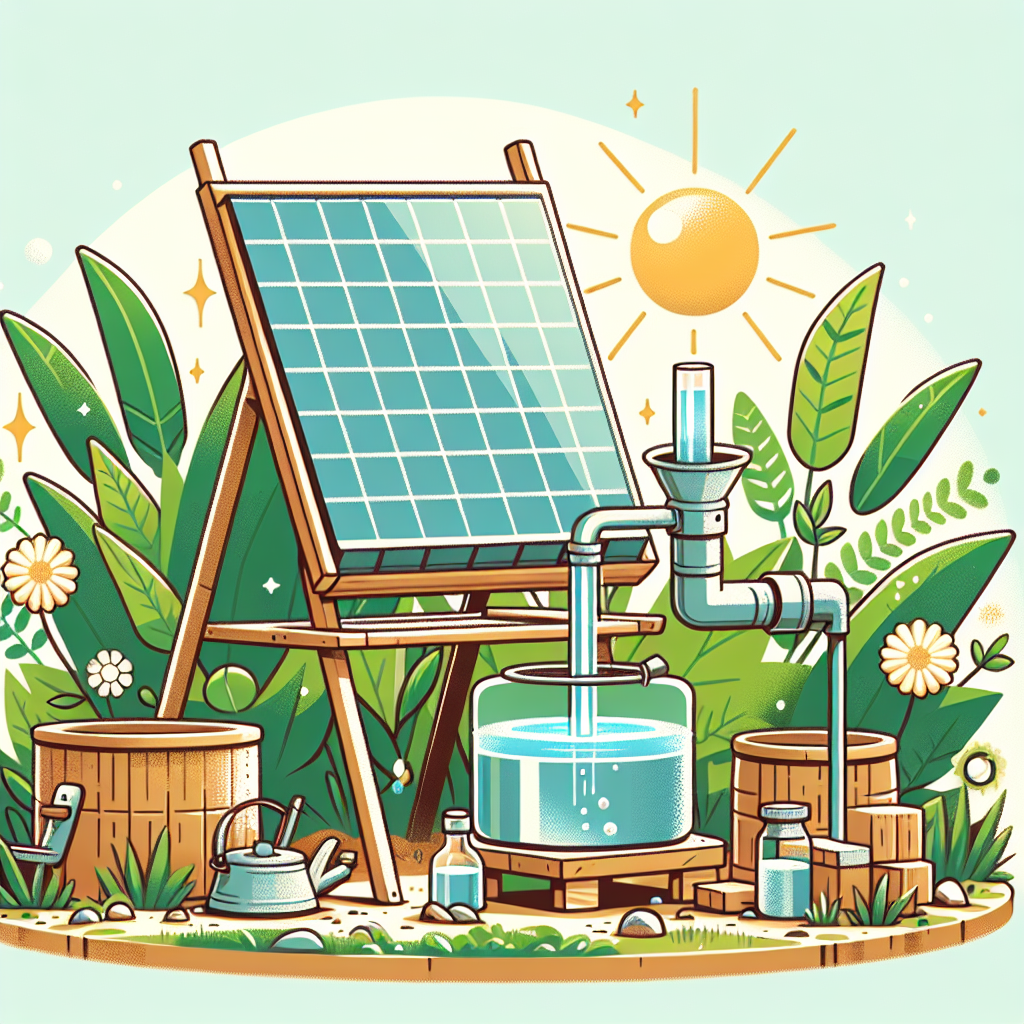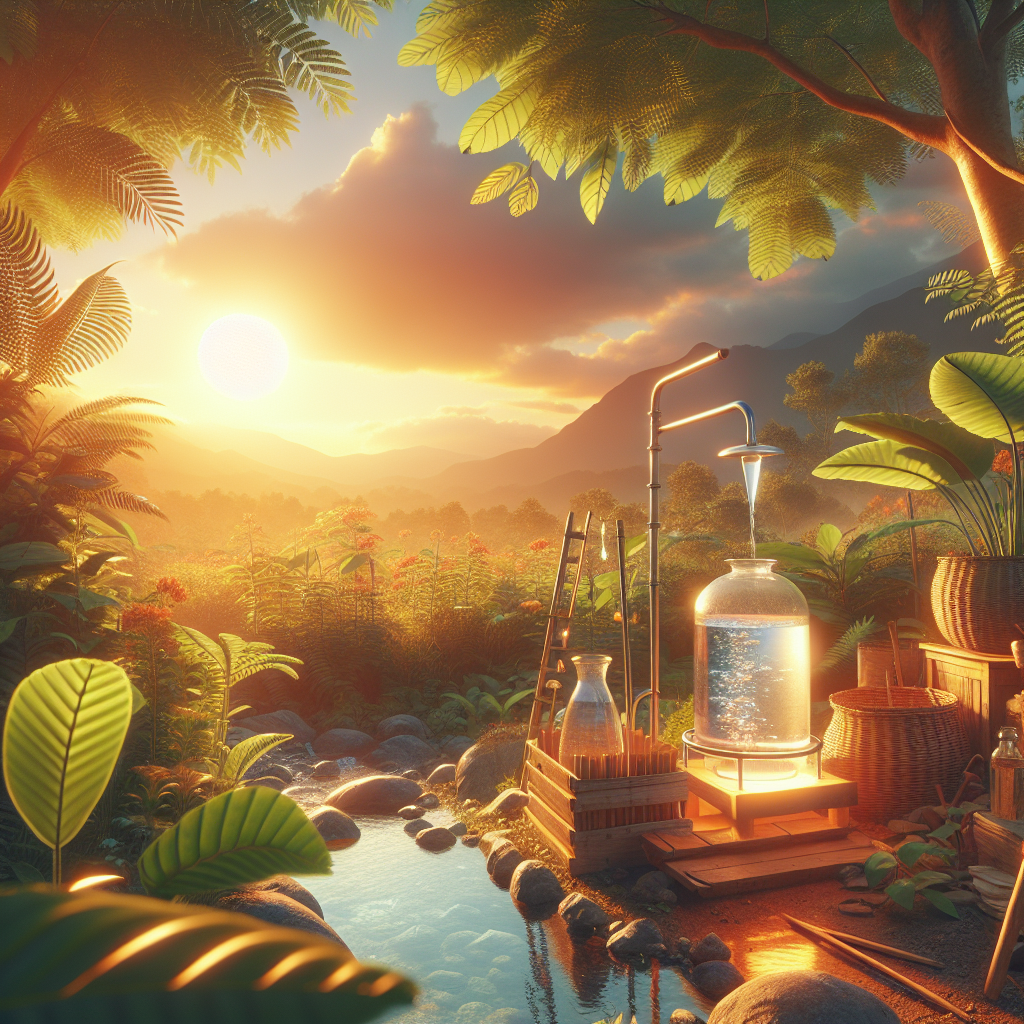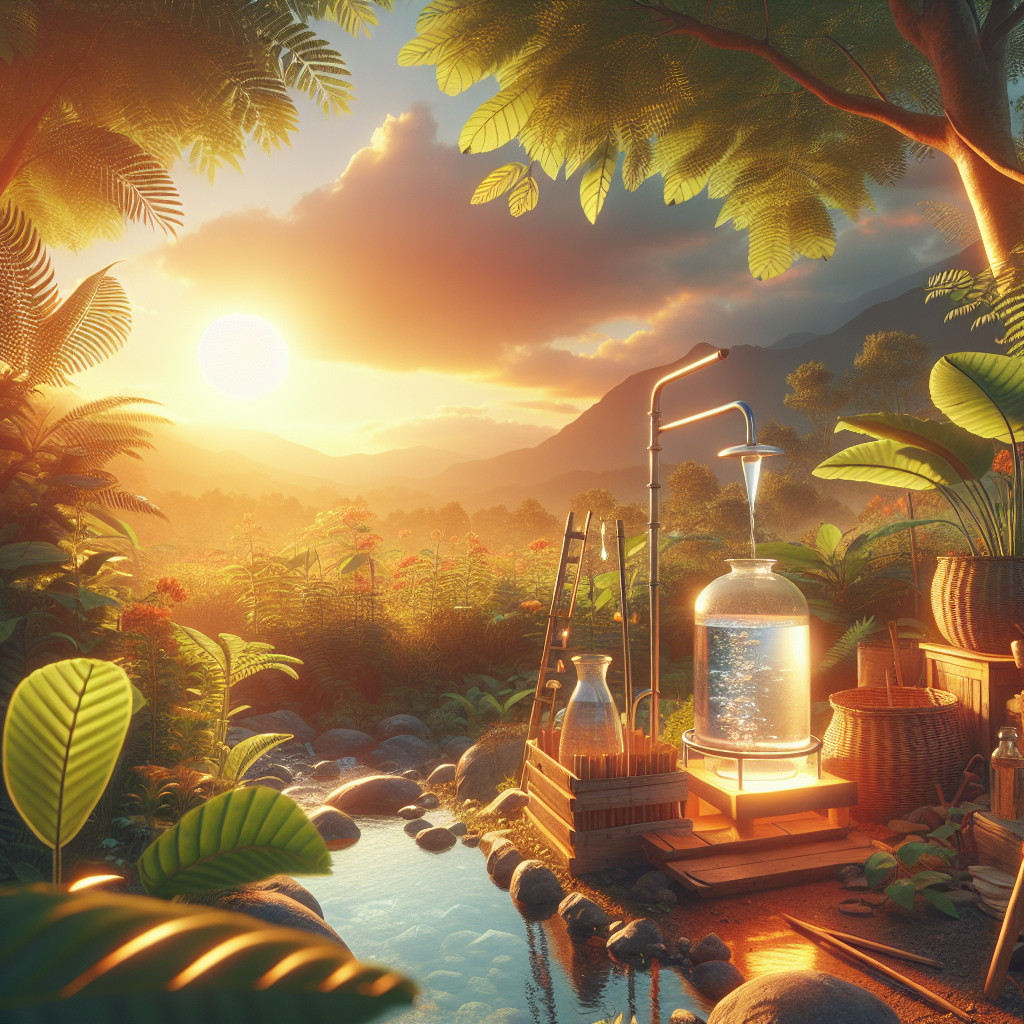Imagine if you could have access to clean, drinkable water wherever you are, without relying on any external sources. Well, the good news is that you can! In this article, we will guide you through the process of making and using a solar still. A solar still is a simple yet effective device that uses the sun’s energy to purify water, providing you with a sustainable and reliable source of hydration. By the end of this article, you will have the knowledge and tools to create your very own solar still and transform murky water into crystal clear refreshment. Get ready to embark on this eco-friendly adventure and quench your thirst in the most innovative way possible.

Materials Needed
Before you can start building your own solar still, make sure you have the following materials prepared:
Large plastic container
This will serve as the main structure of your solar still. Look for a sturdy and opaque container with a lid that can hold a significant amount of water.
Small container
You will need a smaller container to collect the condensed water vapor inside the solar still. A bottle or cup will suffice for this purpose.
Plastic sheet or tarp
To create the necessary slope for your solar still, you will need a plastic sheet or tarp. This will help direct the condensation towards the small container.
Rocks or weights
Lastly, you will need some rocks or weights to secure the plastic sheet or tarp in place. These will prevent it from being blown away by wind or accidentally shifting.
Building the Solar Still
Now that you have gathered all your materials, it’s time to start building your solar still. Here are the steps to follow:
Preparing the large plastic container
Ensure that your large plastic container is clean and free from any debris. Remove the lid and set it aside for now, as you will need it later.
Creating a slope
Place the plastic sheet or tarp on the ground where you want your solar still to be located. Position it in a way that it forms a slope, with one end higher than the other. This will help direct the condensation towards the small container.
Adding the small container
Place the small container at the lowest end of the slope created by the plastic sheet or tarp. This is where the condensed water vapor will collect.
Covering the still
Carefully place the large plastic container over the small container and the plastic sheet or tarp, ensuring that it covers all sides and leaves no gaps. Secure the lid tightly on the large plastic container, creating a sealed environment inside.
Collecting Water
Once you have built your solar still, it’s time to start collecting water. Here are the steps to follow:
Placing the still outdoors
Find a suitable location outdoors that receives ample sunlight throughout the day. The more sunlight your solar still receives, the more efficient it will be in producing water.
Positioning the small container
Make sure the small container inside the solar still is positioned directly below the lowest end of the plastic sheet or tarp slope. This will allow the condensed water vapor to flow towards it and collect in the container.
Maintaining the still
Regularly check the solar still to ensure that it remains intact and properly sealed. Clear away any obstructions or leaves that may interfere with the condensation process. Additionally, make sure the still is securely anchored to the ground to avoid any accidental movement.
Water Purification
While the water collected in the solar still is generally safe to drink, it’s always a good idea to take additional steps to purify it. Here are some methods you can use:
Boiling the collected water
One of the simplest and most effective ways to purify water is by boiling it. Once you have collected water in the small container, transfer it to a separate container and boil it for at least 5 minutes to kill any potential harmful microorganisms.
Using water purification tablets
Water purification tablets are a convenient option for purifying collected water. Follow the instructions provided with the tablets and add the appropriate amount to the water. Allow the tablets to dissolve fully before consuming the water.
Filtering the water using a cloth
If you have access to a clean cloth, you can use it to filter any impurities from the collected water. Simply pour the water through the cloth into a clean container, removing any visible particles or sediment.
Using a water purification system
For a more comprehensive water purification process, consider investing in a portable water purification system. These systems utilize advanced filtration technology to remove bacteria, viruses, and other contaminants from the water.

Tips for Optimal Water Collection
To maximize the efficiency of your solar still and ensure a steady supply of clean drinking water, consider the following tips:
Choosing a sunny location
Place your solar still in an area that receives plenty of direct sunlight throughout the day. The heat from the sun will enhance the evaporation process and increase water production.
Keeping the still flat and level
It is crucial to maintain the flatness and levelness of your solar still. Any tilting or unevenness can disrupt the condensation process and reduce water output. Regularly check and adjust the position of the still as needed.
Adding vegetation to increase humidity
To create a more humid environment inside the solar still, you can add some vegetation, such as green leaves or grass, to the bottom of the still. This will release moisture during the evaporation process and increase water production.
Using multiple solar stills
If you require a larger volume of water or want to increase water production, consider building multiple solar stills. By placing them together in close proximity, you can harness the power of the sun more effectively and collect more water.
Advantages of Using a Solar Still
There are several advantages to using a solar still for water collection:
Suitable for remote areas
Solar stills can be constructed and used in remote areas where access to clean water may be limited. They do not require electricity or complicated equipment, making them highly accessible.
Low-cost and easily accessible materials
The materials needed to build a solar still are inexpensive and readily available. The main components, such as the large plastic container and plastic sheet/tarp, can often be repurposed from household or industrial items.
Environmentally friendly
Solar stills rely solely on the energy from the sun to produce water. They do not emit any harmful substances or contribute to pollution, making them an eco-friendly alternative to other water collection methods.
Produces clean drinking water
When properly constructed and maintained, solar stills can produce clean drinking water by harnessing the natural processes of evaporation and condensation. The collected water is generally safe to drink, although additional purification methods may be necessary.
Disadvantages of Using a Solar Still
While solar stills have many advantages, there are also some disadvantages to consider:
Slow water production
Solar stills are not known for their rapid water production. The evaporation and condensation processes can take time, especially in less sunny or humid conditions. It is important to be patient when relying on a solar still for water.
Dependent on weather conditions
The efficiency of a solar still heavily relies on weather conditions, particularly sunlight and humidity levels. Cloudy or overcast days can significantly reduce water production, while dry or arid environments may pose challenges in water collection.
Limited water volume
Due to their design, solar stills typically produce a limited amount of water at a time. This may not be an issue for individuals or small groups, but it may not be sufficient for larger water needs.
Requires regular maintenance
To ensure optimal performance, solar stills require regular maintenance. This includes checking for any damage or leaks, clearing obstructions, and cleaning the components. Neglecting maintenance can lead to reduced water production or contaminated water.
Potential Applications
Solar stills have a wide range of potential applications, including:
Survival situations
In emergency or survival situations where access to clean water is limited or non-existent, a solar still can be a lifesaving tool. It provides a means to collect and purify water, increasing the chances of survival.
Camping and hiking trips
For outdoor enthusiasts, a solar still can be a valuable addition to camping or hiking gear. It provides a reliable source of drinking water, eliminating the need to carry heavy water containers during extended trips.
Developing countries without access to clean water
In many developing countries, access to clean water is a major challenge. Solar stills can be a cost-effective and sustainable solution, providing communities with a means to produce their own clean drinking water.
Water preservation in drought-prone areas
Drought-prone areas often suffer from water scarcity. Solar stills can help communities preserve the limited water resources they have by maximizing water output through evaporation and condensation.
Conclusion
Building and using a solar still is a practical and eco-friendly way to access clean drinking water. By utilizing simple materials and harnessing the power of the sun, you can produce water in remote areas, during emergencies, or in situations where access to clean water is limited. Remember to follow the steps outlined in this article, and consider the advantages and disadvantages of using a solar still. With proper maintenance and additional water purification methods, solar stills can provide a reliable source of clean drinking water, promoting water sustainability and ensuring the well-being of individuals and communities.

